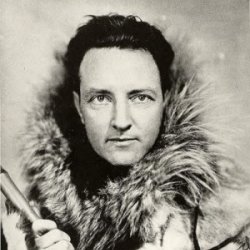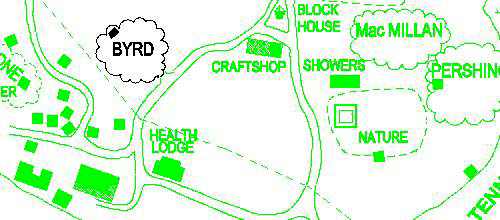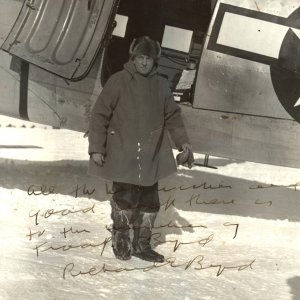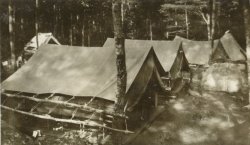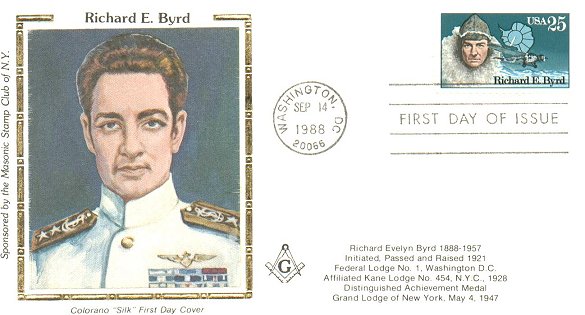| Rear Admiral Richard Evelyn Byrd,
USN (October 25, 1888 – March 11, 1957) was a pioneering American polar
explorer, aviator and a recipient of the Medal of Honor.
Richard E. Byrd (1888-1957)
Polar Explorer, Naval Officer, Pioneer Aviator. Born October 25,
1888 at Winchester, Virginia, a brother of Harry F. Byrd, governor and
senator. He graduated from the U.S. Naval Academy in 1912 and advanced
to Lieutenant Commander at retirement in 1916 and later promoted to Commander
after his flight over the North Pole in 1926. He was given the rank
of Rear Admiral in 1930. During WWI he entered the Aviation Service
and commanded U.S. Air Forces until armistice. In WWII he served
with Admiral King in Washington and Nimitz in the Pacific, going overseas
four times. He was highly decorated including the Congressional Medal
of Honor in 1926 and special Congressional Medals in 1930, 37 and 46.
He made his famous flight over the North Pole on May 9, 1926 with Floyd
Bennett. In 1927 he made he made a trans-Atlantic flight of 4,200
miles with three companions--New York to France. His first Antarctic
expedition was in 1928-30 and his second in 1933-35. He discovered
the Edsel Ford Mountains and Marie Byrd Land. He spent five months
alone near the South Pole. In 1939 he was made commander of the U.S.
Antarctic Service and again went to the South Polar region, discovering
five new mountain ranges, five islands, and more than 100,000 square miles
of area. In 1946 he was named commanding officer of the U.S. Navy
Antarctic Expedition and again in 1956 headed the U.S. Expedition in Antarctic
exploration. |

